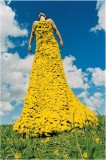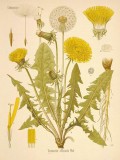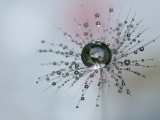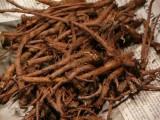 Do you like dandelions (Taraxacum officinale or Leontodon taraxacum)? See the photos below if you don’t have a clue what I’m talking about (e.g. if you live in the Southern Hemisphere and never played with dandelions in your childhood). I’ve heard that coffee made out of dried dandelion roots can be very addictive. And according to the photo you can make a dress out of the flowers. And they are cheap. Mostly free.
Do you like dandelions (Taraxacum officinale or Leontodon taraxacum)? See the photos below if you don’t have a clue what I’m talking about (e.g. if you live in the Southern Hemisphere and never played with dandelions in your childhood). I’ve heard that coffee made out of dried dandelion roots can be very addictive. And according to the photo you can make a dress out of the flowers. And they are cheap. Mostly free.
You may not like them in your garden, though (if you live in the Nothern Hemisphere). And possibly not in salads.
OK, Let’s rephrase. Do you like latex? (I would expect a more distinct answer to that question since you read this ;-D ) What is the connection? See below …
Anyone who has picked dandelions as a child will be familiar with the white liquid that seeps out of the stalks as you break them off. Viscous, sticky – and a much sought-after material: natural latex. Around 30,000 everyday products contain natural rubber, everything from car tires, catheter tubes, latex gloves to tops for drinks bottles. Car tires, for instance, would not be elastic enough without the incorporation of natural rubber. The bulk of this material comes from rubber trees in Southeast Asia. Rubber produced in this way can, however, cause allergic reactions, which is clearly an issue with clinical products. A fungus is also creating concern for rubber cultivators. In South America the infection is now so widespread that large-scale cultivation has be come virtually impossible. The disease now also appears to have taken root in Southeast Asia’s rubber belt. Fungicides still provide at least temporary protection. But if the fungus disease was to reach epidemic proportions, chemical crop protection would be rendered useless – experts fear that the natural latex industry could collapse if that were to happen.
This is how the article (PDF) “Dandelion Rubber” written by a prof. Dr. Dirk Prüfer of Fraunhofer Institute (DE) begins. Sounds fatal to the latex fetish industry too. A bad news for us. But let’s read further…
Researchers are therefore turning to other sources – such as the Russian dandelion. Germans, Russians and Americans produced rubber from this plant during the Second World War. Once it is cut, latex seeps out, albeit difficult to use as it polymerizes immediately. Scientists from the Fraunhofer Institute for Molecular Biology and Applied Ecology IME in Aachen have now come a step nearer to large-scale rubber production from dandelions. “We have identified the enzyme responsible for the rapid polymerization and have switched it off,” says Prof. Dr. Dirk Prüfer, Head of Department at the IME. “If the plant is cut, the latex flows out instead of being polymerized. We obtain four to five times the amount we would normally. If the plants were to be cultivated on a large scale, every hectare would produce 500 to 1000 kilograms of latex per growing season.” The dandelion rubber has not caused any allergies so far, making it ideal for use in hospitals.
In the lab the researchers have genetically modified the dandelion. Their next step will involve cultivating the optimized plants using conventional breeding techniques. In around five years, Prüfer estimates, they may well have achieved their goal. In any case, the dandelion is not just suitable for rubber production: the plant also produces substantial quantities of inulin, a natural sweetener.
Hey! We are safe! And most important, those of us, who (despite their utter love for latex) can enjoy rubber clothes from a distance only because of the allergy, may finally try that incredibly erotic material on their skin without any risk!
Who knows what meaning the expression “dandelion dress” will have… ;-P






One thought on “Dandelion dress or allergy free latex”